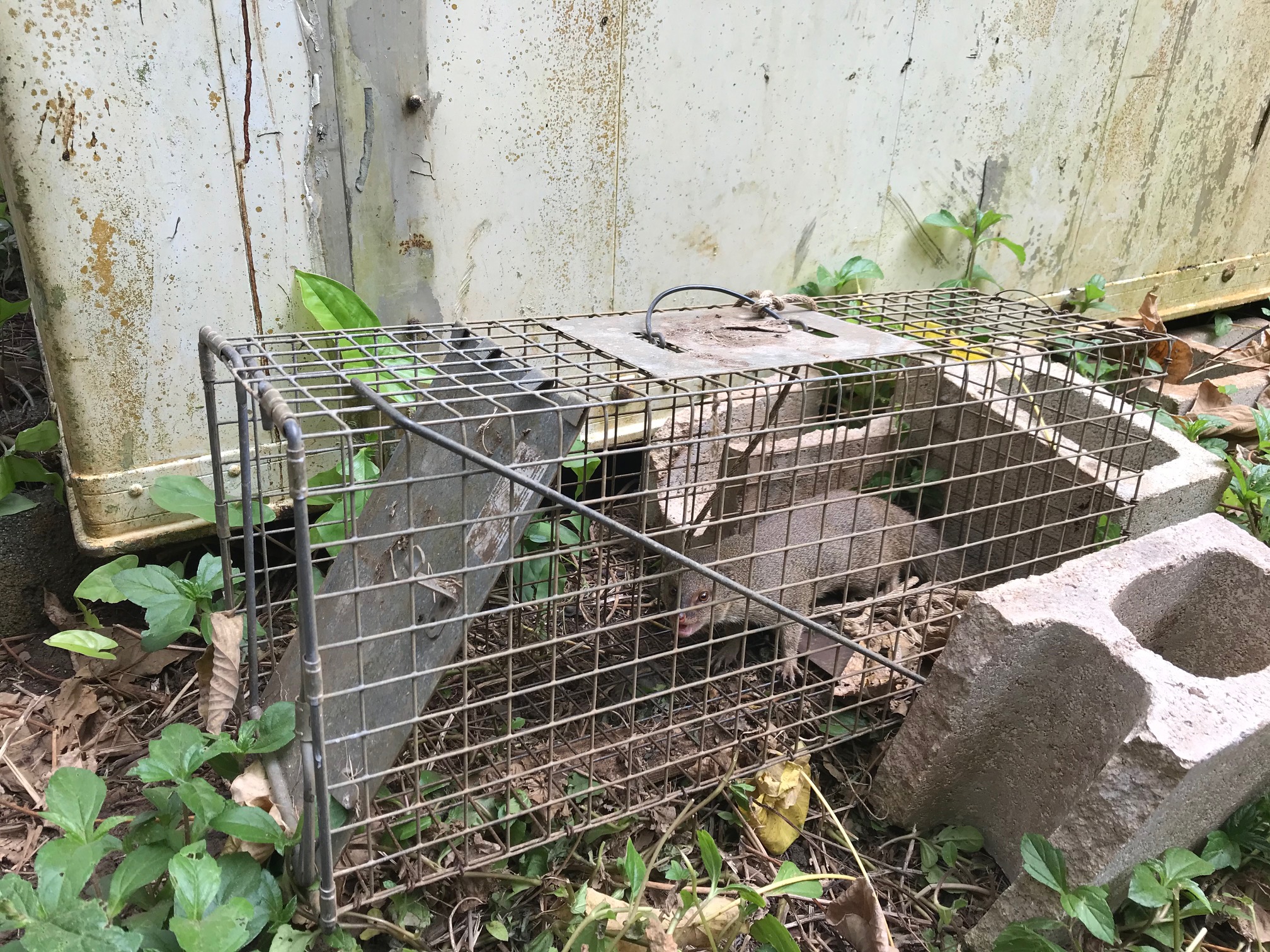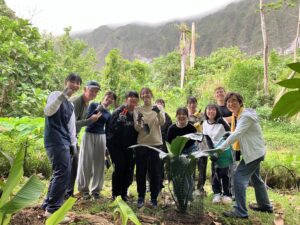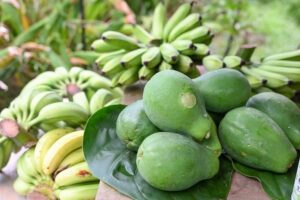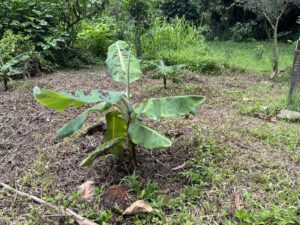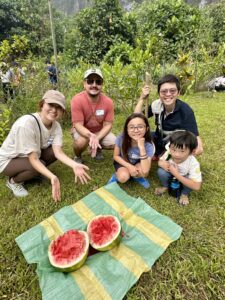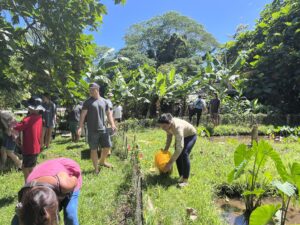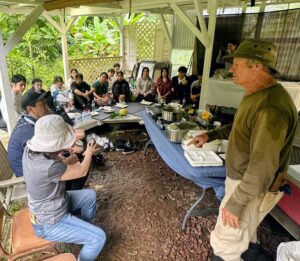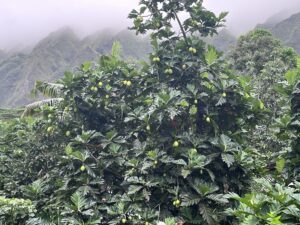A few days ago, Gary was staring at Ko’olau Mountain without words for a while.
“What’s wrong?
“A mongoose killed our chickens…”
Our grown chickens are free-range while Gary is on the farm, roaming around the farm eating fruit such as ulu, avocados, and bananas that have naturally fallen to the ground when ripe, as well as insects found in the grass and under the soil. In the evening, they came back to the pen.
Chicks are not released from the cage as they will be easily attacked by mongooses, wild dogs, and other wild enemies, so they must wait to roam until they have grown large and fast enough to run away.
Those killed this time were young adults carefully raised with exceptional organic food in the hutches since they were newborn chicks. Just before we thought it would be safe to let them out of the coop, a mongoose seemed to have entered through a little hole while Gary was away.
When Gary came into the coop to feed the chickens first thing in the morning, he saw the body of a young chicken with its head bitten off and scattered feathers. The mongoose’s sudden attack must have startled them, and they must have gone on quite a rampage in fear.
Gary quickly cleaned up the debris, and when I arrived at the farm, the coop for the young birds was neatly organized again. Still, he was too shocked and angry to move immediately after witnessing the carnage evidence.
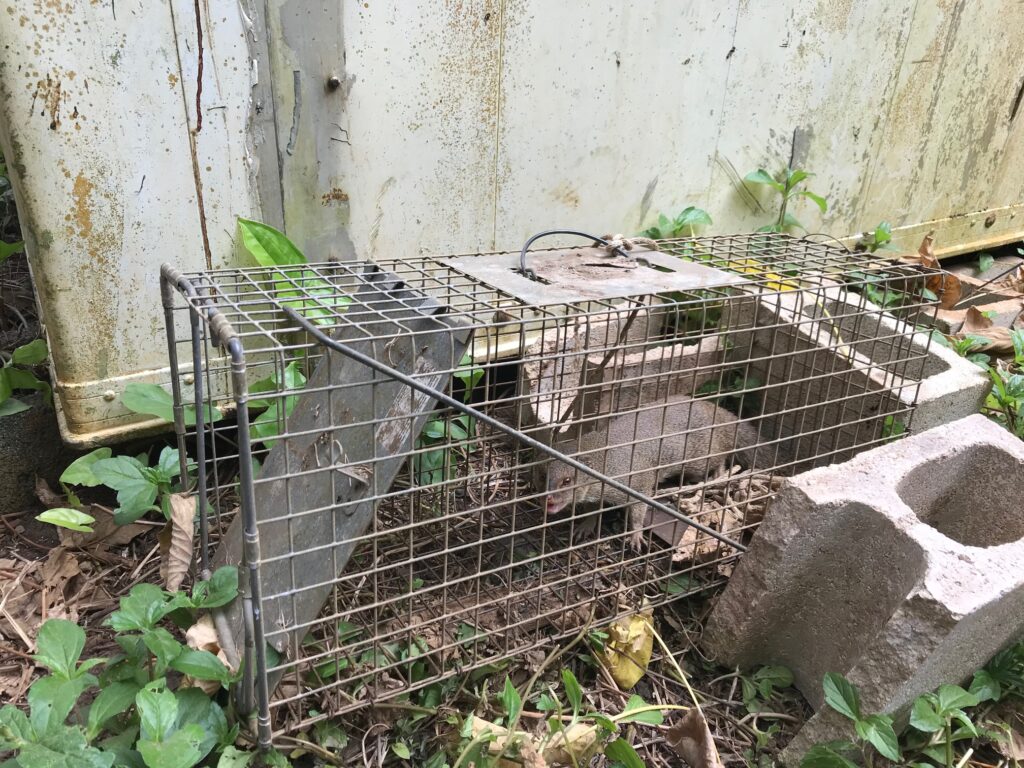
The mongoose in Hawaii is a ferocious animal native to India that can grow up to 26 inches (65 cm) long and is listed as an “invasive species” by the State of Hawaii.
They were first introduced to Hawaii in 1883 by sugar plantation workers on Maui, Molokai, and Oahu to catch rats. (See Hawaii Invasive Species Conference website: https://dlnr.hawaii.gov/hisc/info/invasive-species-profiles/mongoose/#:~:text=The%20mongooses%20found%20in%20 Hawai,’i%20and%20O’ahu.)
Although they eat rodents such as rats, they do more damage by attacking nests and eating eggs, baby birds, insects, and other small animals, including native ones and endangered species in Hawaii, such as sea turtles.
Gary has maintained a policy that he would not use pesticide poisons on his farm, and he has fenced our crops and chickens to protect them from mongooses as well as wild boars and rats that have invaded the farm. He has also set traps where mongooses are likely to appear and has confined them to cages to let them starve to death.
However, the next day after the bloodshed crime, the mongoose, which had gotten a taste for young birds, returned to the chicken coop and wandered around again, looking for an opportunity to attack them.
The chickens are colleagues of our farm, enriching our organic soil with their manure and leg skill in mixing it with the grass and providing us with fresh, delicious eggs, too. The mongoose kills these important “producers” and destroys the natural ecosystem of the forests we are trying to protect.
Today, Gary reset the mongoose traps and finally decided to use poisoned bait for mongoose control. The poisoned bait was placed in a limited area where the chickens could not get to it, and now the mongooses are patiently watched until they take the bait. He also repaired the chicken coops to be sturdy and leave no gaps.
The veteran hens, which usually run and walk outside their hutches during the daytime, are now quiet in their cages, probably frightened by the recent attack in the neighbor pens. The rainy season, when chickens take leave from laying eggs, was over in Hawaii, and they have just started producing eggs every day again. However, we must put off fresh and delicious eggs for a little while until their fears subside.
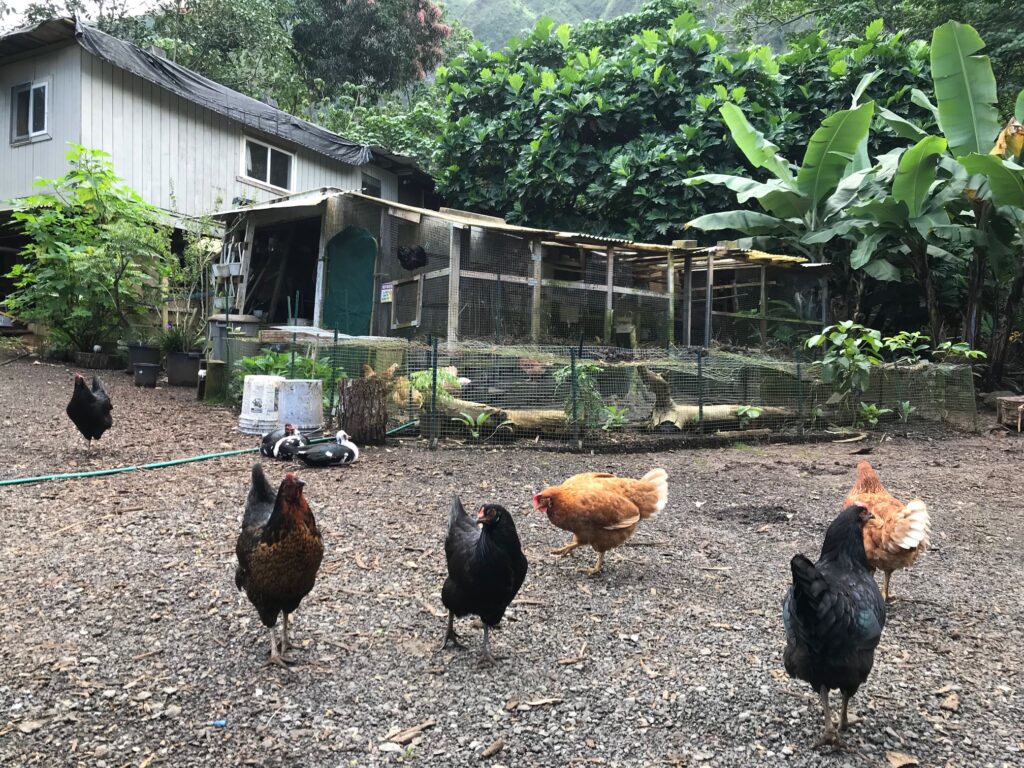
Addendum:
The readers who have come across this article are encouraged to research about the “Mongoose Control Project in the Northern Region of Okinawa Island.” While Hawaii currently has a ban on mongooses, it appears that Japan, including local governments, is actively working on removing them as well.
(https://kyushu.env.go.jp/okinawa/press_00016.html)

